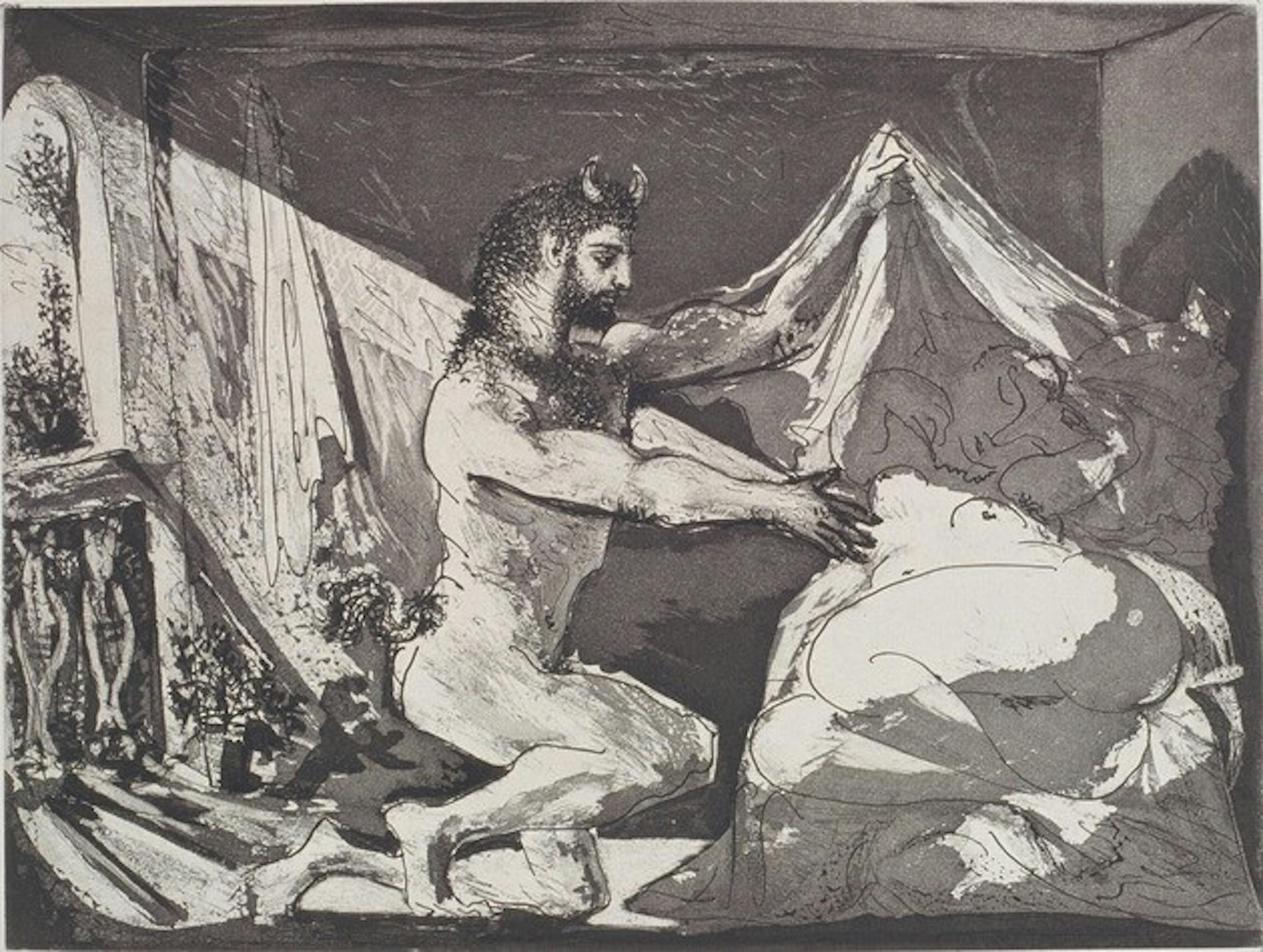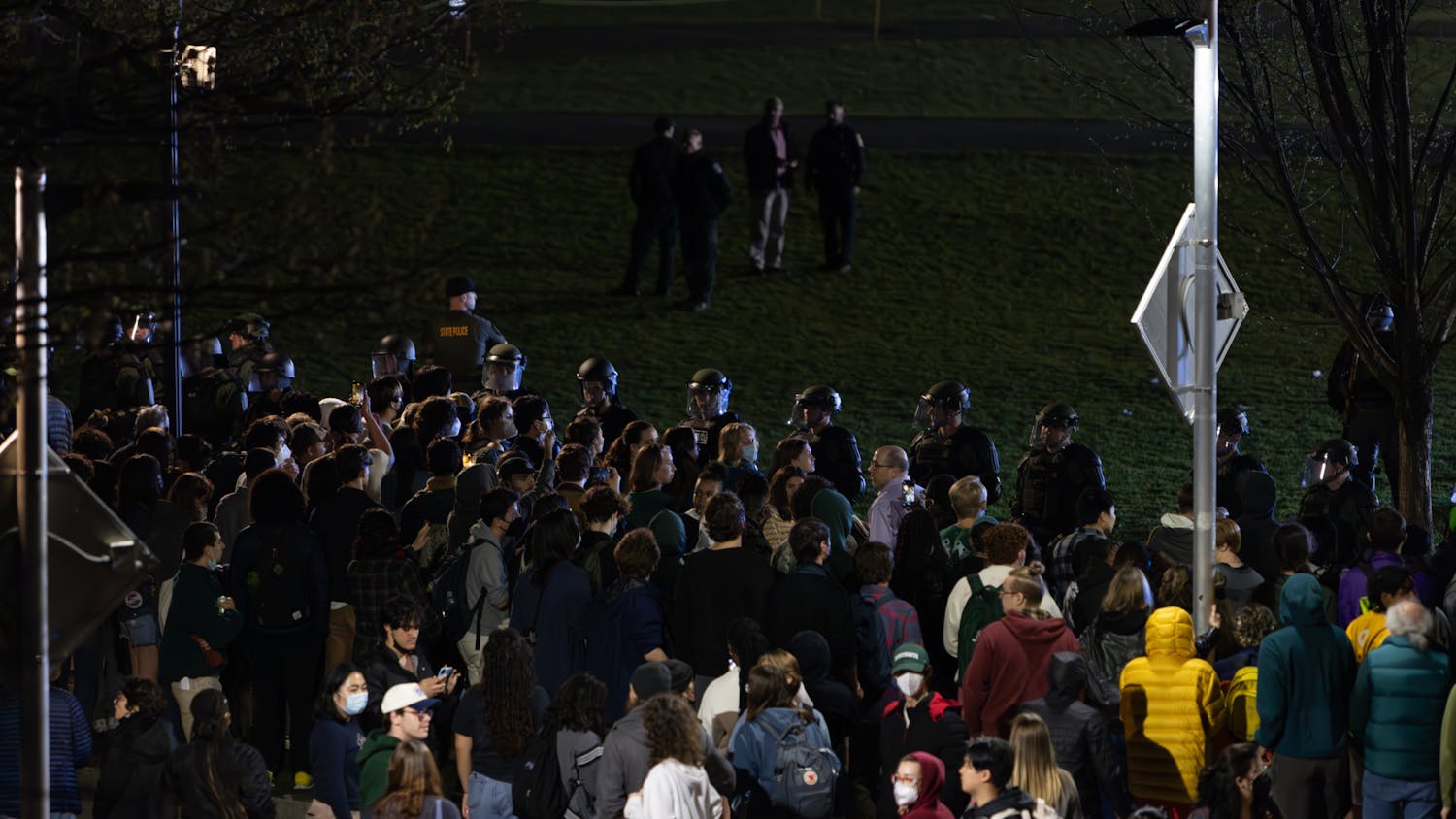"Picasso: The Vollard Suite," which will be on display from Aug. 17 through Dec. 20, displays 100 etchings created by famed Spanish painter Pablo Picasso between 1930 and 1937 that were commissioned by Parisian art dealer Ambroise Vollard.
The Hood marks one of the few museums in the world that is able to showcase the complete set of these images, Hood director Michael Taylor said.
"As an art historian and curator, I have devoted my career to the study of modern art and modern culture, [so] it is a dream come true to be able to organize a major Picasso exhibition at the Hood," Taylor said.
Along with Picasso's famed etchings, the exhibition integrates several key pieces on loan from other art museums to help provide context, Taylor said.
Prints by Rembrandt and Goya artists whose styles Picasso admired and referenced in his own work were borrowed from the Philadelphia Museum of Art and the Museum of Fine Arts in Boston, respectively.
The Hood was also able to obtain Picasso's 1935 "Minotauromachy," often considered the greatest print made in the 20th century that depicts the bison-like Minotaur being led by a young girl.
The "Vollard Suite" is regarded as representing a neo-classical style, Taylor said, because the prints were inspired by ancient Mediterranean art, specifically the linear designs found on Etruscan mirrors and traditional vase paintings of early Greece.
Created in tandem with "The Vollard Suite," "Cubism and Its Legacy," another exhibition centered on Picasso, will be featured at the Hood from Aug. 17 through Dec. 20.
Between 1907 and 1914, Picasso and his collaborator George Braque focused on how to dissect a subject, breaking it down into its elemental geometric planes and reassembling it to create art "at once recognizable and unrecognizable," Sarah Powers, adjunct curator of special projects, said.
The duo sought to assert the flatness of the picture plane and the materiality of paint, rather than representing an "illusionistic" view of reality, Powers said.
Picasso's subsequent "Vollard Suite" prints represent a rebellion against his earlier Cubist tendencies, and Powers and Taylor both said they predict this tension will create a palpable dynamic between the two exhibitions.
"We thought it would be a wonderful teaching moment to show how the harmony and order found in many of the Vollard Suite' etchings represented a fundamental break form Picasso's earlier interest in the fragmentation of Cubism, which was defiantly anti-classical in its radical re-ordering of reality," Taylor said.
"Cubism and Its Legacy" also includes paintings by abstract expressionist Mark Rothko, well-known Cubists Juan Gris and Marcel Duchamp and Italian "futurists" an offshoot of Cubism Carlo Carra and Gino Severini.
From Aug. 10 through Dec. 18, the Hood also presents "Shadowplay: Transgressive Photography." This exhibition contains photographs intended to "startle, disturb and cause one to question," co-curators and studio art professors Brian Miller and Virginia Beahan said.
"Shadowplay" features contemporary color and black and white photographs, spanning from the second half of the 20th century to the present day. The show includes work by noted photographers such as Fiona Foley, Tierney Gearon and Luis Gispert.
"I am drawn to images which represent suppressed ideas or understanding," Miller said. "It is easy to go with the flow and make pictures that are crowd pleasers, but I am far more interested in and excited by artists who allow me to see their obsessions."
These "transgressive" photographs represent a range of ideas, behaviors and desires that contradict the mainstream, Miller said.
Beahan said that the direction and photo choices of the exhibition were perhaps also influenced by some of the recent social and political dialogue pervading campus.
"If I am being wildly optimistic, I hope that seeing the examples of these artists' ways of living and working will give [students] the courage to be the person they are, regardless of what anyone else thinks," Miller said.
Finally, coming to campus on Sept. 7, "Between Tradition and Modernity: The Art of Fan Tchunpi" will be at the Hood until Dec. 8.
Tchunpi, a prolific Chinese artist of the modern era, created art that spoke for her nation in an age of crisis, war and revolution, Xinyue Guo '14, assistant organizer of the exhibition, said.
Born in China and trained in France, Tchunpi was a central part of the "New Art Movement" in China.
Artists of this movement grappled with how to forge a new style of art that preserved the essence of traditional Chinese art, yet created a new identity for the country as well, Guo said.
"[This exhibition] is not only a presentation of beautiful artworks, but also an intriguing life story intertwined with a nation's revolution and struggling," Guo said.
Guo, a double major in art history and math, said she always had an interest in Tchunpi, and was connected with Taylor by an art history professor during her sophomore year.
Throughout her sophomore summer and junior year, Guo helped select and organize pieces for the exhibition, as well as created the labels and brochure.
Guo is also considering writing an honors thesis on the artist.
With so many exhibitions and arts events lined up at the Hood this fall term, Taylor offers a message for students, especially incoming freshmen.
"This is your museum; visit often and bring your friends," Taylor said.




